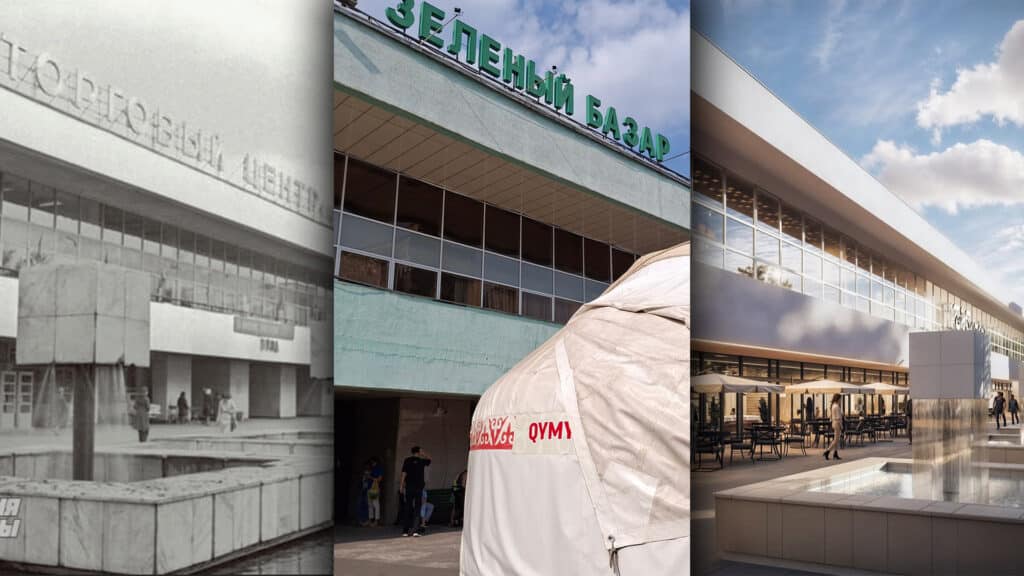
One of Almaty’s oldest public markets, also promoted as a tourist attraction for experiencing Eastern bazaar vibes, is awaiting reconstruction. In late July, the Almatygenplan Research Institute — the organization responsible for the city’s development and management — announced that on May 23 the Almaty City Council had approved a project to renovate an important piece of the city’s aesthetics and history.
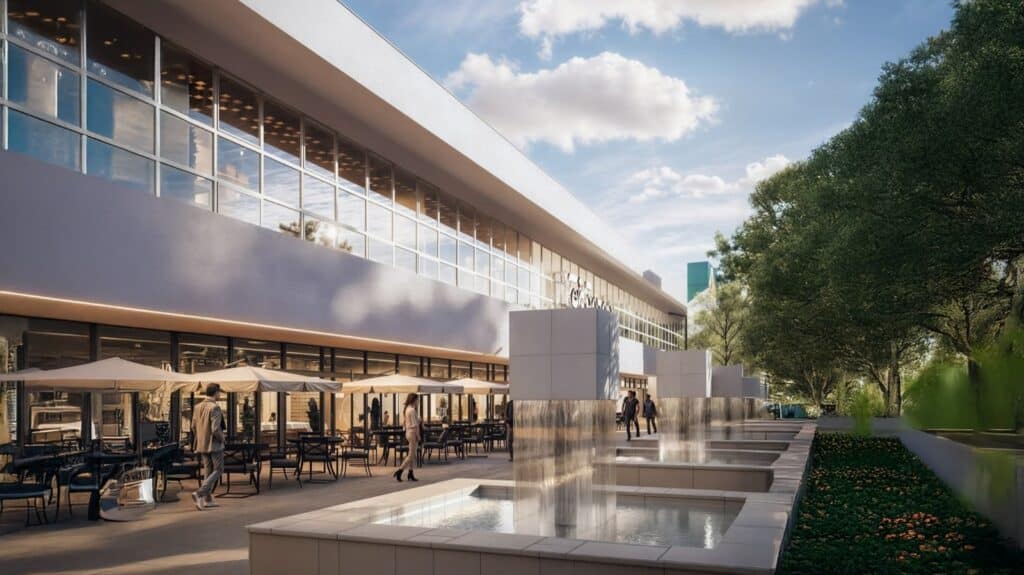
According to the architects’ design, the building will acquire a more modern look, with extended summer cafés and a promenade, while restoring the highlight of the original design — the fountains lost in «the wild 90s.» Visible construction work has not yet begun and even a timeline has not been announced, so a Kursiv.media correspondent visited the site to capture its current state.
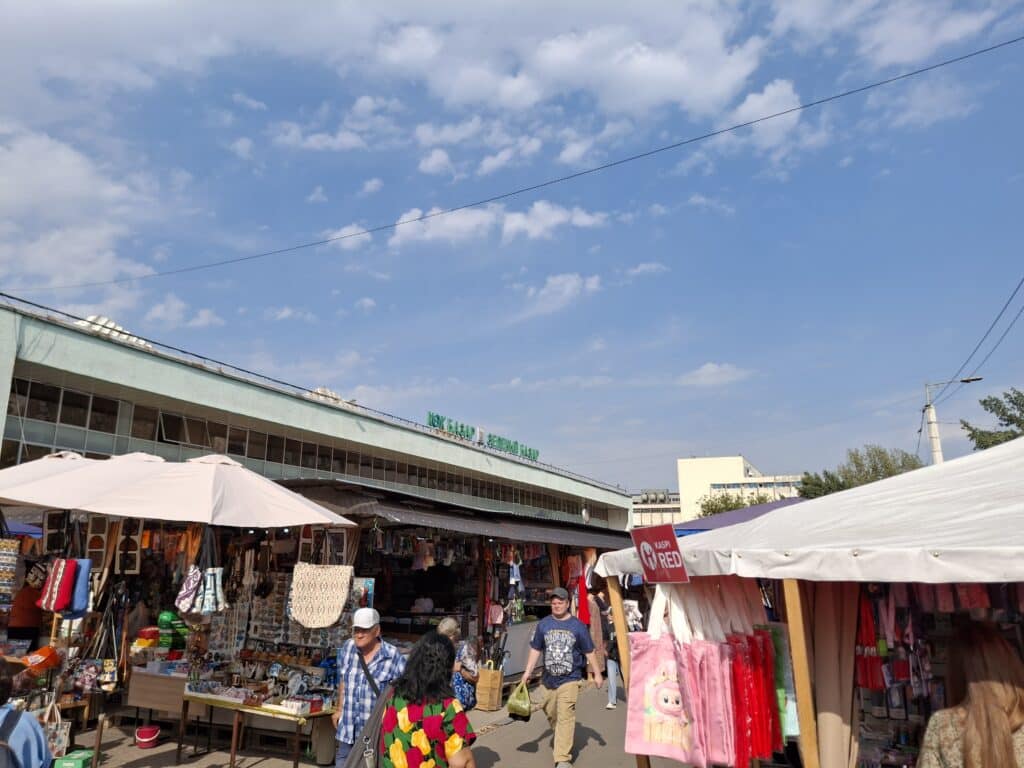
The Green Bazaar lies in the city center, not far from the Zhibek Zholy metro station and another historic landmark — the Ascension Cathedral. Once you step onto the market grounds, you are immediately swept into international crowds of people, with stalls — some even styled after traditional Kazakh homes — arranged in several rows right in front of the entrance. Most of them sell souvenirs, small accessories and seasonal goods. Since the academic year is about to begin, the most popular items now are copybooks, pens and other supplies students need.
The Green Bazaar is organized much like most markets in the former Soviet states — with separate areas for consumer goods and food. The first offers almost everything, from tobacco to traditional clothes that might serve as good souvenirs. This section is not located inside the iconic building itself, but rather in an improvised annex covered with a plastic roof.
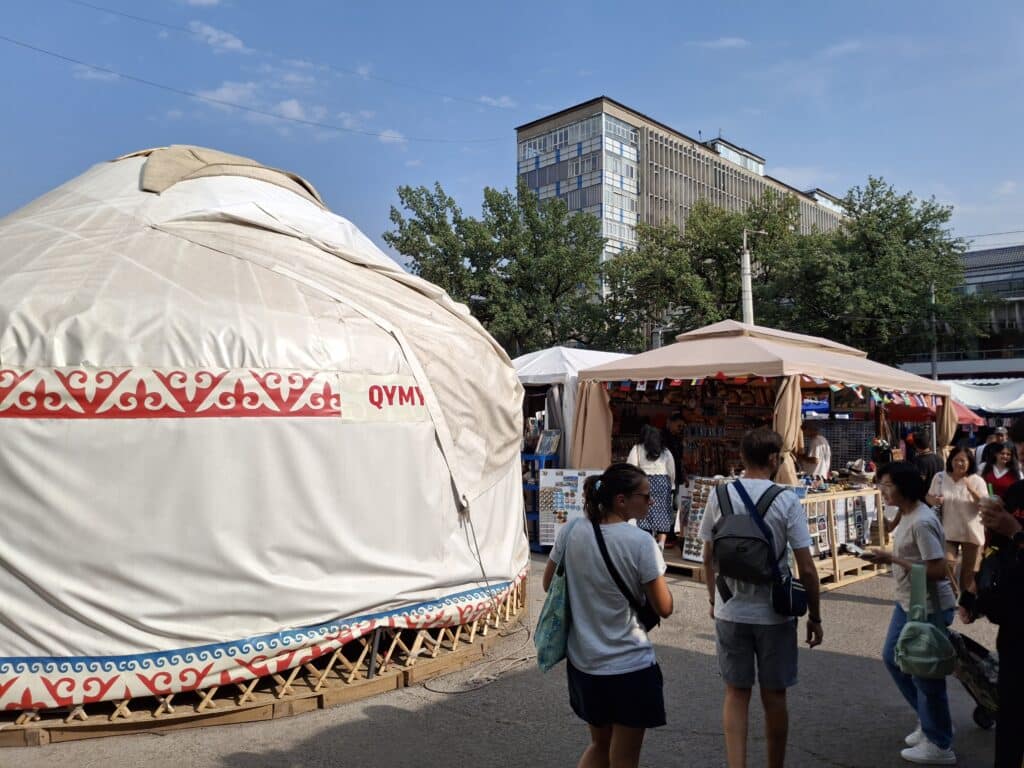
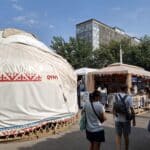

Making your way through the crowd, you reach the iconic food market inside the main building on the first floor. Compared with the previously covered Altyn Orda — one of Kazakhstan’s largest marketplaces — the Green Bazaar is smaller, yet more tourism-ready, with less chaotic aisles and counter arrangements and most sellers speaking English. At the entrance, visitors are welcomed by counters offering traditional delights such as navat, a rock candy made from grape juice and sugar syrup, along with prunes and dried fruits.
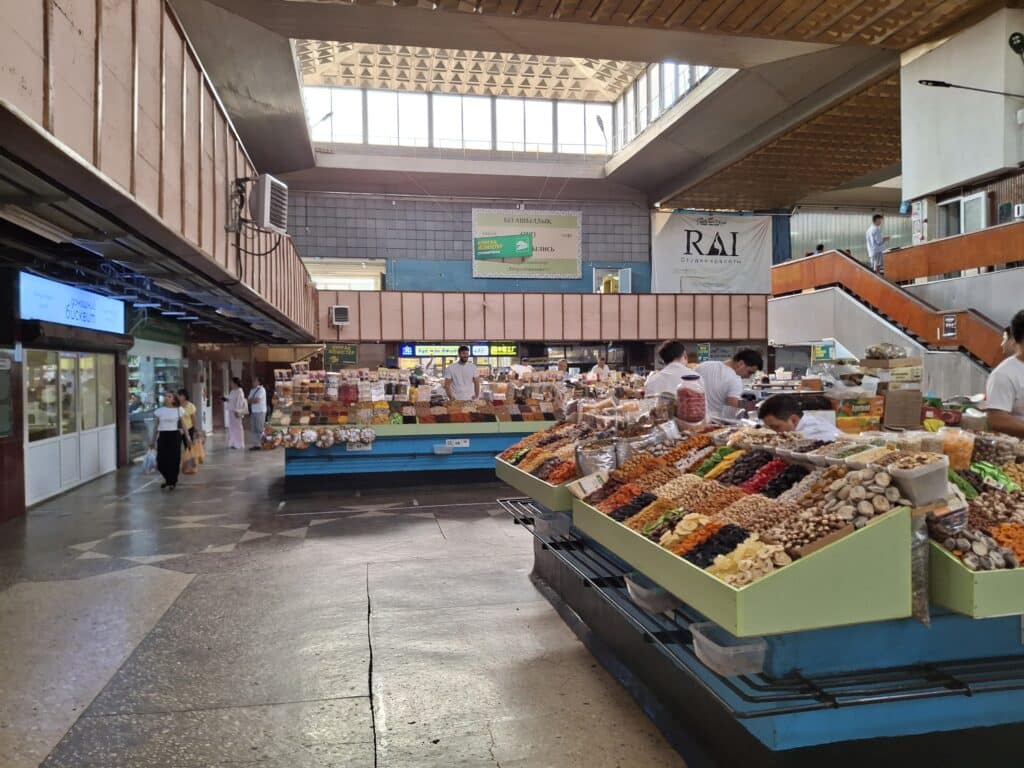
Moving along the central aisle, you will encounter international delights, including Georgian churchkhela and pan-Eastern lokum in different varieties.
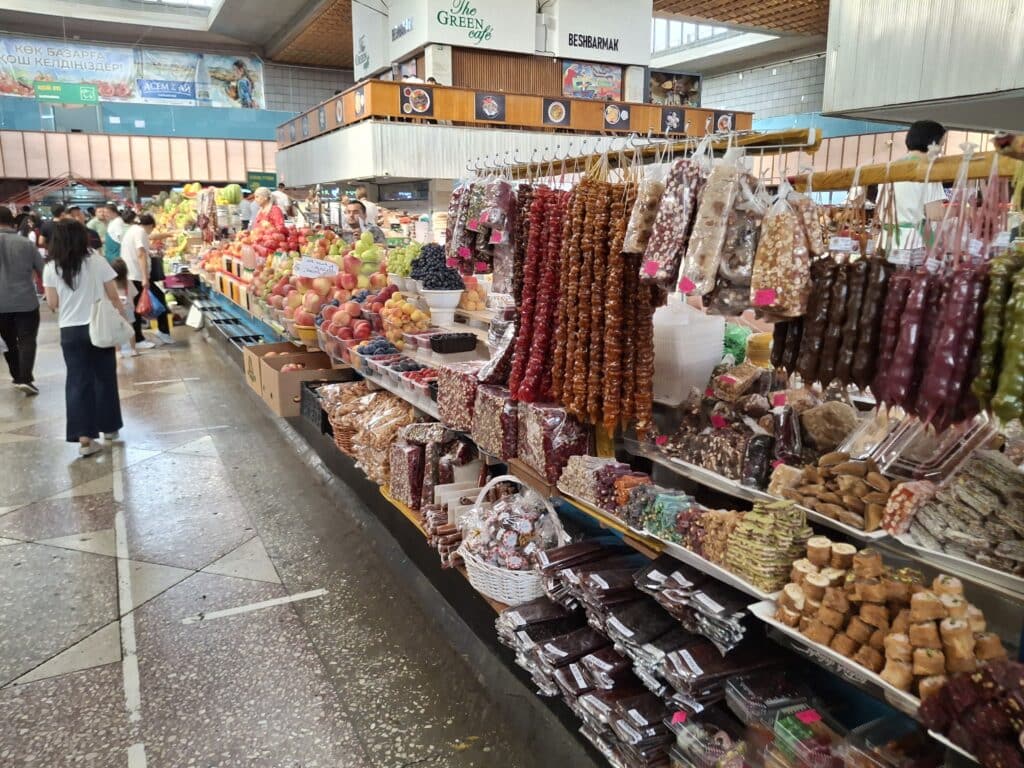
The next counter holds something of greater symbolic value for Almaty — apples. In fact, the city’s very name comes from the word «apple,» partly because it is home to the Sievers apple (Malus sieversii), a wild ancestor of today’s domesticated varieties and believed to be the genetic source of most apples found on grocery store shelves worldwide. By late August, the first harvest of the legendary aport apples appears — fruits that can grow as large as two fists put together. But be ready to open your wallet: one kilo costs about $6 — around $2 per apple, even after bargaining. Still, they are truly worth it.
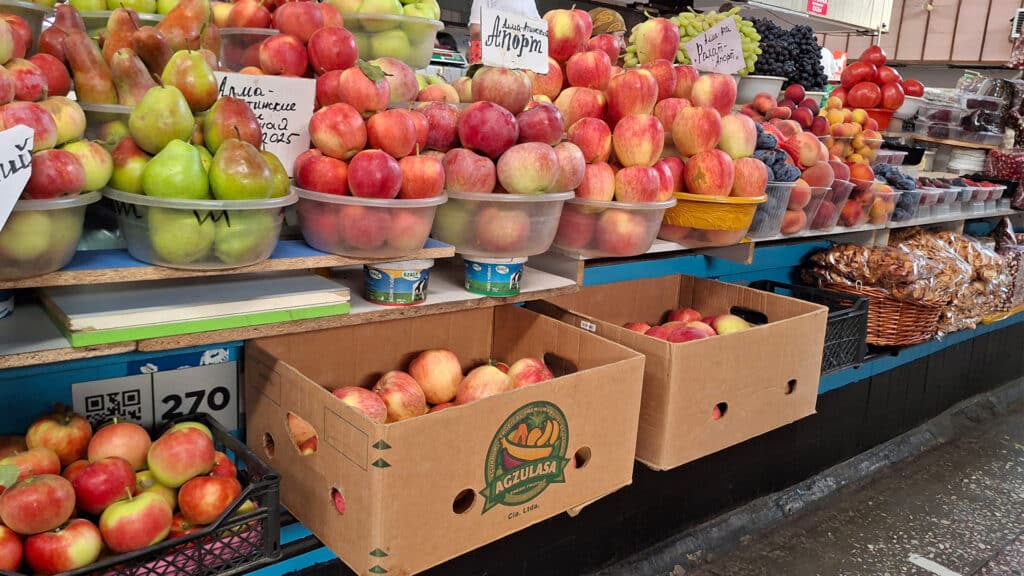
No bazaar is complete without its meat aisles. Traditionally, some are dedicated to horsemeat and its specialties, such as the horse sausage shuzhyk. Other stalls sell lamb and beef, while several also offer pork — a reminder that Almaty, and Kazakhstan as a whole, is a place where people of different ethnicities and faiths come together.
The first floor also features regular supermarkets, yet some still offer things you probably wouldn’t find outside the bazaar, such as shops specializing in Chinese goods.

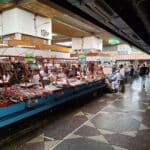

Moving on to the second floor, visitors are greeted with a top-down view of the bazaar, along with several offices offering various services — including medical services — and cafés.
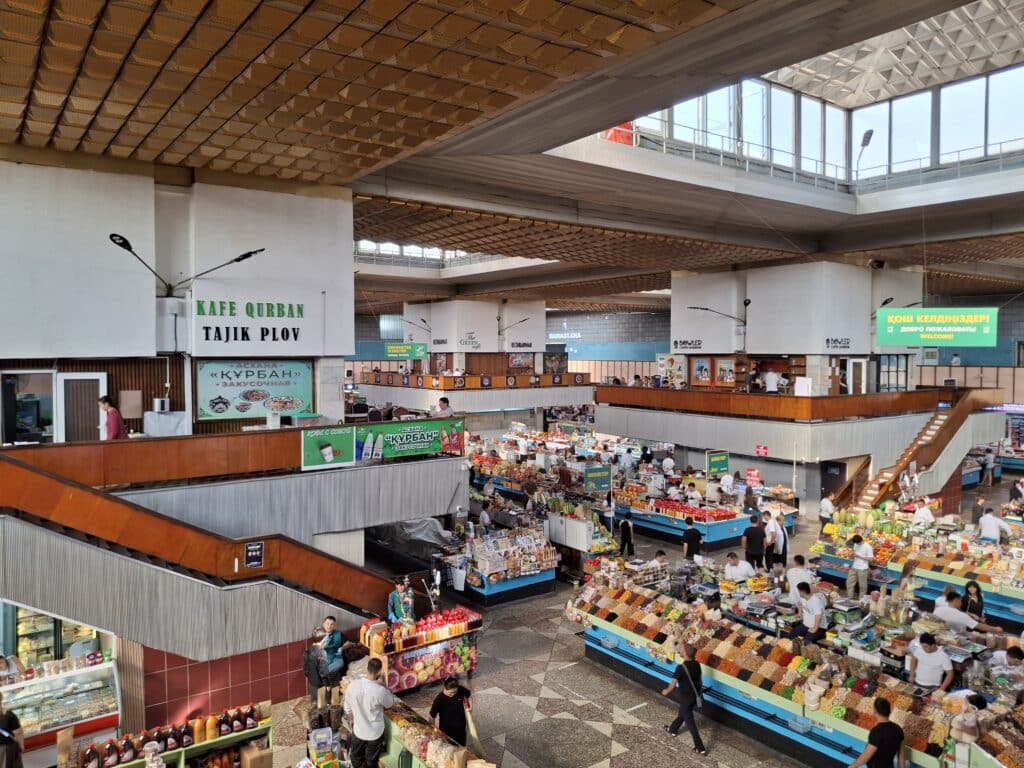
It’s also worth noting that, for a time in July, the signs and advertising banners were in Korean. The reason was that Indian filmmakers had chosen the Green Bazaar as a stand-in for a South Korean venue in scenes featuring actors in formal suits, seemingly portraying members of the Korean mafia.
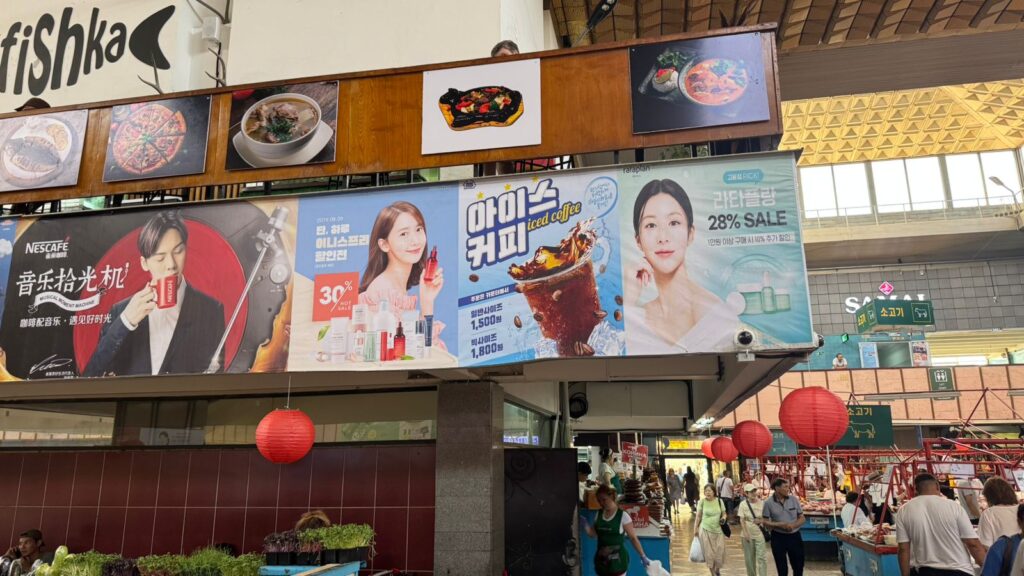
Overall, the Green Bazaar is a tourist-ready spot to experience Eastern bazaar vibes and connect with history dating back to the late 19th century — right in the city’s historical center, close to other landmarks. As noted earlier, the market attracts people of different nationalities, so even the language barrier is rarely a problem. Surveillance cameras are nearly everywhere, making the venue safe to visit and enjoy. However, if you’re seeking a rawer, more authentic experience and you dare to step outside Almaty’s «golden square,» head to Altyn Orda on the edge of the city. It is definitely worth your attention.

